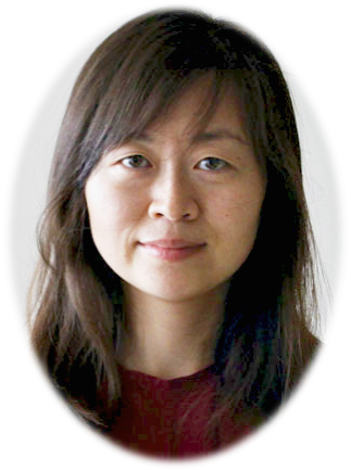
Keynotes
 PHD, FRSC
PHD, FRSCJames McGill Professor of Neurology and Psychiatry,
Scientific Director, Healthy Brains for Healthy Lives Initiative,
McGill University, Canada
Title
Multimodal Modelling of Network Propagation of Neuropathology in Dementia
Abstract:
There is increasing evidence that the spatiotemporal evolution of neuropathology in dementia is not random or a simple diffusion process but is mediated by a connectivity network that is closely associated with white matter pathways. This talk will review recent studies that examine network-based models of disease propagation at the systems level, incorporating data from imaging, behaviour, genomics and CSF or blood protein levels. These data support the contention that vascular pathology is a primary factor in the early stages of Alzheimer’s disease that may create the conditions wherein toxic misfolded proteins, beta amyloid and tau, accelerate a neurodegenerative
cascade.
Biography:
Professor Alan Evans did his PhD in biophysics at Leeds University in the UK, studying 3D protein folding. He spent 5-year at Atomic Energy of Canada as a PET physicist. In 1984, he moved to the Montreal Neurological Institute at McGill where his research interests include multi-modal brain imaging with PET and MRI, structural network modeling and large-scale brain databasing.
He has published 564 peer-reviewed papers (ISI h-index = 118 ; Google h-index =172) and has held numerous leadership roles, notably Director of the McConnell Brain Imaging Centre (BIC) during the 1990’s. He is a founding member of the International Consortium for Brain Mapping (ICBM). He was one of the founders of the Organization for Human Brain Mapping (OHBM), serving in numerous positions on the OHBM Council since 1995. He chaired the 4th International Conference on Human Brain Mapping in 1998 and is OHBM Chair for 2016-2017. In 2003 he received a CIHR Senior Scientist Award. In 2014, he was awarded the national Margolese Prize for Research into Human Brain Disorders, the Vezina Prize for Québec Neuroradiology and recognition as a Highly Cited Scientist (top 1%) for Neuroscience and Behaviour (115,247)
citations, Google Scholar). In 2015, he was inducted as a Fellow of the Royal Society of Canada. In 2016, he was awarded the Prix du Québec (Wilder Penfield) and ranked #6 by Science magazine in a list of most influential brain scientists of the modern era.
He is currently Co-Director of the Ludmer Centre for Neuroinformatics and Mental Health and Scientific Director of McGill’s $84M CFREF project “Healthy Brains for Healthy Lives”. He headed the Data Coordinating Center for the NIH-funded multi-center MRI study of normal pediatric development. This project provides a web-accessible reference database of normal maturation. The technologies developed here, notably (i) web-based imaging/behavioural database, LORIS (ii) automated MRI segmentation pipeline, (iii) brain-behavior correlation analysis, are now used in many multi-centre networks studying abnormal pediatric development and neurodegeneration. He leads a grid-processing network, both nationally and internationally (CBRAIN). He is Founder and Director of Biospective Inc., (www.biospective.com), a CRO that offers 3D image analysis for clinical/pre-clinical pharmaceutical studies.
 E. Fredkin University Professor
E. Fredkin University ProfessorMachine Learning Department, School of Computer Science
Carnegie Mellon University, US
Title:
Neural Correlates of Word, Sentence and Story Comprehension
Abstract:
How does the human brain use neural activity to create and represent meanings of words, phrases, sentences and stories? One way to study this question is to give people text to read, while scanning their brain. We have been doing such experiments with fMRI (1 mm spatial resolution) and MEG (1 msec time resolution) brain imaging, and developing novel machine learning analyses for these data. As a result, we have learned answers to questions such as "Are the neural encodings of word meaning the same across different people?", "Are neural encodings of word meaning built out of recognizable subcomponents, or are they randomly different for each word?", "What sequence of neurally encoded information flows through the brain during the half-second in which the brain comprehends a word? ", “How are meanings of multiple words combined when reading phrases, sentences, and stories?” This talk will summarize some of what we have learned, and newer questions we are currently studying.
Biography:
Tom Michael Mitchell is an American computer scientist and E. Fredkin University Professor at the Carnegie Mellon University (CMU). His research focuses on basic and applied problems in machine learning, on understanding how the human brain reads and represents the meaning of language, and statistical learning algorithms for natural language understanding by computer. Mitchell is a prolific author of scientific works on various topics in computer science. He is known for his contributions to the advancement of machine learning, artificial intelligence, cognitive neuroscience, and is the author of the textbook Machine Learning. He founded the Machine Learning Department at CMU, and chaired it from 2006 until 2016. He is a member of the United States National Academy of Engineering since 2010. He is also a Fellow of the American Association for the Advancement of Science and a Fellow the Association for the Advancement of Artificial Intelligence.
Feature Keynotes:

IDG/McGovern Institute for Brain Research &
State Key Laboratory of Cognitive Neuroscience and Learning
Beijing Normal University, China
Title
The Cognitive Neural Basis of Object Knowledge
Abstract:
Our knowledge about the world serves as a foundation for various cognitive processes including object recognition and use, language, reasoning, and problem solving. How is object conceptual knowledge represented in the brain and how does it interact with object perception? I will present a series of brain imaging studies with various types of populations (healthy, patients, congenitally blind) in my lab that explored the brain network basis of object knowledge representation and more specifically, in the visual ventral pathway. The overall results reveal a tri-network structure for conceptual processing and further highlight the effects of different domains in object processing.
Biography:
Yanchao Bi is a professor in IDG/McGovern Institute for Brain Research and the State Key Laboratory of Cognitive Neuroscience and Learning, at Beijing Normal University. She received her PhD from the Department of Psychology, Harvard University in 2006. Her current work focuses on the study of functional and neural architecture associated with semantic memory and language, using cognitive, neuropsychological and neuroimaging methods. Her work is funded by ministry of science and technology (973project) and national science fundation of China. She serves on the editorial board of Journals Scientific Reports and Cognitive Neuropsychology, was a Sackler scholar of psychophysiology and a Fulbright scholar, and was listed as a rising star in the Observer by the American psychological association.
 Associate Professor
Associate ProfessorDepartment of Neurological Surgery
Brain and Spinal Injury Center (BASIC)
Weill Institute for Neurosciences
University of California, San Francisco (UCSF)
Zuckerberg San Francisco General Hospital
Principal Investigator, San Francisco VA Medical Center
Title
Harnessing Large-Scale Data-Sharing to Drive Discovery and Bench-to-Bedside Translation in Traumatic Brain Injury and Spinal Cord Injury
Abstract:
Traumatic damage to the central nervous system (CNS: brain and spinal cord) results in multifaceted changes spanning across molecular, cellular, histopathological, and behavioral endpoints. The complexity of CNS injury poses a challenge for reproducibility of scientific discoveries as well as translation of mechanistic discoveries into therapeutic treatments. To address these challenges, we have begun assembling large-scale retrospective data repositories for CNS injury data from basic scientific studies in multiple species. The goal is to enable large-scale, pooled data analysis to: 1) uncover fundamentally conserved syndromic features of CNS injury across laboratories, animal models and species, and 2) to accelerate therapeutic application of these discoveries in human patients. I will discuss recent work demonstrating that CNS injury researchers are willing to share their data on a large-scale, and discuss results from data-driven analytics applied to these shared data. Specific examples include the discovery of acute care predictors for long term spinal cord injury outcomes, visualization of quantitative relationships between genetic polymorphisms and psychiatric and cognitive recovery in traumatic brain injury, and identification of combinatorial drug therapies that reliably impact the multidimensional recovery across studies. Our results illustrate the transformative potential of brain informatics approaches when applied to the CNS injury, and illustrate the broad potential for data-driven-discovery in disease-centered neuroscience more broadly.
Biography:
Adam Ferguson is an associate professor of Neurological Surgery at University of California, San Francisco (UCSF) and a principal investigator in the Brain and Spinal Injury Center (BASIC) at Zuckerberg San Francisco General Hospital (ZSFG). His research focuses on the mechanisms of recovery after neurological trauma. Injuries to the brain and spinal cord invoke a number of complex biological processes that work in concert to determine the extent of tissue repair and functional recovery. Dr. Ferguson’s work uses a combination of molecular and cell biology, behavioral neuroscience, and statistical modeling to provide an information-rich picture of the holistic syndrome produced by CNS trauma in translational models. The long-term goal of this research is to provide system-level therapeutic targets for enhancing recovery of function after brain and spinal injury.
 Professor
ProfessorSchool of Information Science and Engineering
Lanzhou University, China
Title
Computational Psychophysiology Based Research Methodology for Mental Health
Abstract:
Computational Psychophysiology, the new direction broadens the field of psychophysiology by allowing for the identification and integration of multimodal signals to test specific models of mental states and psychological processes. Additionally, such approaches allow for the extraction of multiple signals from large-scale multidimensional data, with a greater ability to differentiate signals embedded in background noise. Further, these approaches allow for a better understanding of the complex psychophysiological processes underlying brain disorders such as autism spectrum disorder, depression, and anxiety. Given the widely acknowledged limitations of psychiatric nosology and the limited treatment options available, new computational models may provide the basis for a multidimensional diagnostic system and potentially new treatment approaches.
Biography:
Dr. Bin Hu, Professor, Dean, School of Information Science and Engineering, Lanzhou University, China, bh@lzu.edu.cn; IET Fellow; Member at Large of ACM China, Chair of ACM SIGBio China; Vice Chair of International Society for Social Neuroscience (China Committee) and Member of IET Healthcare Technology Network; Chair of IEEE SMC TC on Computational Psychophysiology; Chair Professor of the National Recruitment Programme of Global Experts; Chief Scientist of the National Fundamental Research Program of China (973 Program); Board Member of the Computer Science Committee, Ministry of Education, China; Member of the Division of Computer Science Review Panel, Natural Science Foundation China.
His research interests include Computational Psychophysiology, Pervasive Computing, Mental Health Care. His work has been funded by the “973”, National Science Foundation China, Natural Science Foundation China(NSFC), European Framework Programme 7 and HEFCE UK. He has published more than 200 papers in peer reviewed journals, conferences, and book chapters. He has served as associate editor in peer reviewed journals such as IEEE Trans. Affective Computing, IET Communications, Cluster Computing, Wireless Communications and Mobile Computing, The Journal of Internet Technology, Wiley’s Security and Communication Networks, Brain Informatics etc.
 Investigator
InvestigatorDirector of the Modeling, Analysis, and Theory Group
Allen institute for Brain Science, US
Title
Multiscale Gene Expression Signatures in the Mammalian Brain in Health and Disease
Abstract:
The development of high-throughput neuroanatomic profiling has enabled brain-wide and genome-wide maps of gene expression such as the Allen Brain Atlas (www.brain-map.org.) Studying these maps elucidates the highly stereotyped structure and function of the mammalian brain, implying a conserved molecular program responsible for its development, cellular structure and function. By studying the relative stability of genes in the brain we can assess reproducibility of gene expression patterning across major structures in the adult human brain, revealing its mesoscale genetic organization. Genes with the highest differential stability are highly biologically relevant, with enrichment for brain-related annotations, disease associations, drug targets and literature citations. Such genes identify anatomically diverse and reproducible signatures, representing distinct cell types, intracellular components and/or associations with neurodevelopmental and neurodegenerative disorders. Genes in neuron-associated compared to non-neuronal networks show higher preservation between human and mouse; however, many diversely patterned genes exhibit marked shifts in regulation between species. Highly consistent transcriptional architecture in neocortex is also correlated with resting state functional connectivity, suggesting a link between conserved gene expression and functionally relevant circuitry. Nervous systems however are composed of specific cell types, although the extent of cell type diversity and function of these types is not yet well understood. Major efforts are underway to classify cell types by combining multiple modalities from transcriptome, electrophysiology, morphology, anatomy, and connectivity data. Brain function arises from activity at micro and macro scales, and constructing a detailed cellular taxonomy of the cortex and brain at large will ultimately advance our understanding of the specific function of the transcriptomic program in health and disease.
Biography:
Michael Hawrylycz is an Investigator at the Allen institute for Brain Science in Seattle, WA. He received his PhD in applied mathematics at the Massachusetts Institute of Technology. As member of the Allen Institute since its beginning in 2003 he has led the informatics and data annotation efforts of many of the basic atlases. More recently as Director of the Modeling, Analysis, and Theory Group, his group is responsible for modeling and data analysis strategies for the Institute’s next generation projects. He has played leading roles in the design and analysis of the brain atlas projects for the mouse, rhesus macaque and human brains. He has worked in a variety of applied mathematics and computer science areas, addressing challenges in electrical engineering, image processing, and computational biology and genomics.

Radiology and BRIC
Director, Center for Image Analysis and Informatics
University of North Carolina at Chapel Hill, US
Title
Machine Learning in Medical Imaging Analysis
Abstract:
This talk will summarize our recently developed machine learning techniques, including sparse learning and deep learning, for various applications in medical imaging. Specifically, 1) in neuroimaging field, we have developed an automatic brain measurement method for the first-year brain images with the goal of early detection of autism such as before 1 year old. This effort is aligned with our recently awarded Baby Connectome Project (BCP) (where I serve as Co-PI), which will acquire MR images and behavioral assessments from typically developing children, from birth to five years of age. Besides, we have also developed a novel multivariate classification method for early diagnosis of Alzheimer’s Disease (AD) with the goal of potential early treatment, as well as prediction of success of neurosurgery by collaboration with Huashan Hospital in Shanghai. 2) In image reconstruction field, we have developed a sparse learning method for reconstructing 7T-like MRI from 3T MRI for enhancing image quality, and also another novel sparse learning technique for estimation of standard-dose PET image from low-dose PET and MRI data. All these techniques will be discussed in this talk.
Biography:
Dinggang Shen is a Professor of Radiology, Biomedical Research Imaging Center (BRIC), Computer Science, and Biomedical Engineering in the University of North Carolina at Chapel Hill (UNC-CH). He is currently directing the Center for Image Analysis and Informatics, the Image Display, Enhancement, and Analysis (IDEA) Lab in the Department of Radiology, and also the medical image analysis core in the BRIC. He was a tenure-track assistant professor in the University of Pennsylvanian (UPenn), and a faculty member in the Johns Hopkins University. Dr. Shen’s research interests include medical image analysis, computer vision, and pattern recognition. He has published more than 700 papers in the international journals and conference proceedings. He serves as an editorial board member for six international journals. He has also served in the Board of Directors, The Medical Image Computing and Computer Assisted Intervention (MICCAI) Society, in 2011-2015.